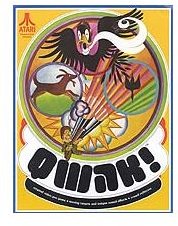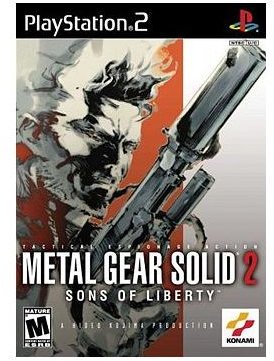This Day in Video Game History: November 5

This Day in Video Game History
1974
Atari released its ground-breaking arcade game Qwak! to U.S. arcades. The duck-hunting shooter was one of the very first games to ever feature an artificial intelligence system for the player’s computer opponent. All previous arcade games were equipped only with discreet logic systems, which generally proved repetitious. Due to this technological advance, as well as its lively gameplay, Qwak! would become a hit.
Kee Games released its Tank! maze arcade game to U.S arcades. The game became so wildly popular that Atari made its “secret” ownership of the subsidiary public knowledge, saving itself from near-bankruptcy with the force of Tank! sales alone. However, what earned Tank a place in history was its technological advancement. It was the first game in history to use IC-based ROM to store graphical data.
1991
Los Angeles Mayor Tom Bradley and Miami Mayor Xavier Suarez officially declared this day to be “Nintendo Fun Day”.
1995

Jeff “CJayC” Veasey launches the GameFAQs website as a database for video game reference material, including cheat codes, game profiles, news, release dates, and walk-throughs. In May of 2003, the site would be acquired by the CNET Network but left largely unaltered. By 2008, the site was one of the three hundred highest traffic sites on the internet, as ranked by Alexa.
1996
Nintendo released the Wave Race 64 racing game for the Nintendo 64 in the U.S. (ESRB: KA)
Virgin Interactive Entertainment released the single-player point-and-click adventure game Broken Sword: The Shadow of the Templars for personal computers in North America. (ESRB: KA)
1997
Sony announced three Christmas-edition memory cards for its PlayStation video game console in Japan. The cards are released in red, green and white.
1998
GT Interactive, an American video game developer, acquired OneZero Media for about $15 million in common stock.
Sega held a Gamer’s Day event in San Francisco, California, at which it demonstrated its upcoming Dreamcast video game console to the press.
1999
Sony Computer Entertainment of America released the Spyro 2: Ripto’s Rage! platform game for the PlayStation in Europe. (ELSPA: 3+)
2000
LucasArts released the single-player game Escape From Monkey Island for PC in the U.S. It was the fourth game in the popular Monkey Island series, all of which are based on the Grim Fandango game engine. (ESRB: T)
Nintendo released Hey You, Pikachu! for the Nintendo 64 in the U.S. (ESRB: E)

2001
Atari released the Splashdown jetski racing game for the PlayStation 2 and Xbox in North America. (ESRB: E)
Nintendo begins shipping its fourth generation video game console, the GameCube, along with six launch titles in North America. The system featured a 485 MHz IBM Gekko PowerPC processor, a 162 MHz ATI Flipper graphics CPU, 24 MB SRAM, 16 MB DRAM, and a 16-bit Macronix DSP Sound Processor. Price: $199.95

2002
Konami released the single-player Metal Gear Solid 2: Sons of Liberty stealth action game for the Xbox in North America. The game nearly matched the success of its blockbuster predecessor, Metal Gear Solid, garnering near-universal acclaim and selling over seven million copies globally. The was especially praised for its involved storyline, which lead some to deem the game the first postmodern video game ever. (ESRB: M)
LucasArts released the first-person shooter Star Wars Jedi Knight II: Jedi Outcast for the Mac OS in North America. (ESRB: T)
Universal Interactive released the Spyro: Enter the Dragonfly platform game for the PlayStation 2 in the U.S. It was the fourth game in the Spyro series, and the first game in the series to be released to more than one game platform. (ESRB: E)
2003
Acclaim Entertainment released the Gladiator: Sword of Vengeance hack and slash game for the Playstation 2 and Xbox in the U.S. Its gameplay compared favorably to other more popular hack and slash genre titles such as BloodRayne and Prince of Persia. (ESRB: M)
Electronic Arts released the hack ‘n’ slash game The Lord of the Rings: The Return of the King, based on the film of the same name, for the GameCube, PlayStation 2, and Xbox in North America. (ESRB: T)
2004
Atari released the RollerCoaster Tycoon 3 simulation game for personal computers in Europe. (PEGI: 3+)
Electronic Arts announced that its NCAA March Madness 2005 for the PlayStation 2 and Xbox had gone Gold.
THQ released the single-player game The Incredibles, based on the animated film of the same name, for personal computers, the GameCube, PlayStation 2, and Xbox in Europe.
2005
Konami released the single-player Castlevania: Curse of Darkness for the PlayStation 2 and Xbox in the U.S. (ESRB: M)
TopWare Interactive released the Knights and Merchants: The Peasants Rebellion real-time strategy game for Windows in North America. (ESRB: E)
2006
Sony announced that November 22, it would release the PlayStation Portable in three new colors, blue, pink, and silver just in time for the holiday shopping season.
2007

Activision released the first-person shooter Call of Duty 4: Modern Warfare for personal computers, the PlayStation 3, and Xbox 360 in North America.
Capcom announced that it will release a special edition package of Devil May Cry 4, for personal computers, the PlayStation 3, and Xbox 360 on February 8, 2008. (ESRB: M)
The Game Factory released the simulation game Build-A-Bear Workshop for the Nintendo DS in the U.S. (ESRB: E)
Ubisoft acquired Japanese video game developer Digital Kids in a bid to target a younger pre-teen demographic.
Vivendi Universal released the Empire Earth III real-time strategy game for Windows in the U.S. (ESRB: T)
